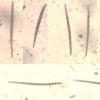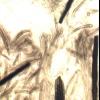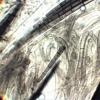
21-12-2025 09:32
Hello.A tiny ascomycete found embedded in wood in

21-12-2025 21:32
Pol DebaenstHello, Garden, Burgweg 19, Veurne, BelgiumOn 10/1

22-12-2025 23:38
Patrice TANCHAUDBonsoir, récolte sur un mur en pierre, apothéci

22-12-2025 00:47
Patrice TANCHAUDBonsoir, récolte à proximité du milieu dunaire

21-12-2025 21:40
Isabelle CharissouBonjour, j'aimerais connaitre les références de

21-12-2025 21:31
Pol DebaenstHello, Garden, Burgweg 19, Veurne, BelgiumOn 10/1

21-12-2025 21:31
Pol DebaenstHello, Garden, Burgweg 19, Veurne, BelgiumOn 10/1

20-12-2025 23:08
Patrice TANCHAUDBonsoir, récolte sur sol sablonneux dans l'arri�
The paraphyses were curved at the top medium septate with only a small amout of swelling.
What does anyone think?
Thanks
Mal
If I understood well the paper by Arauzo & Iglesias everything depends on the frequency. If the number of septa is 15 for 80% of the spores, then most probably is T. hirsutum; On the other hand, if the number of septa and percentages are 8-30%, 9-15%, 10-22%, 13- 6%, ... probably is another species (T. variable?).
Best regards,
zaca

It can be Trichoglossum rasum or Trichoglossum variabile.
Trichoglossum rasum
Spores usually 7-9-septate; to a lesser extent 5-6-septate and 10-14-septate spores may be present
Trichoglossum variabile
Spores usually 10-13-septate; equally large percentages of 7-9-septate and 14-septate spores may be present; few 15-septate spores (< 10 %)
See distribution (in percent) of septation of the spores in T. rasum (orange-brown) en T. variabile (blue) in my collections (LL) and in the collections of Mains (1954, M) (from book 'Aardtongen in Vlaanderen (Earthtongues of Flanders)', in preparation).
Checking many spores is necessary to see clearly the differences in septation between the two species.
Luc Lenaerts

Hi Malcom et al,
I have managed to find my notes on an unusual earthtongue I found at Newborough Warren on Anglesey, North Wales in August 2003. The fruiting bodies were very small (11-16mm high) and rounded in cross section rather than laterally compressed. They were growing in a wet dune slack close to Pinguicula vulgaris (Butterwort). Spore dimensions were 54-88x4-4.7 so shorter than in Malcom's collection. Septation was 6-11 and I could not decide between rasum and variabile, however, the habitat seemed to suggest rasum. I sent the specimens to Brian Spooner at Kew and he came up with T. variabile which surprised me a little. However, referring to my notes I find that 40% of the spores had 10-11, septa, which from the graph supplied via this forum is too high for T. rasum so the ID of variabile is certainly vindicated. It would appear that both rasum and variabile are rare, at least in Britain. DNA analysis may, of course, reveal more species.
Cheers,
Charles.
Are you sure it's a Trichoglossum?
T. rasum and T. variabile have much longer spores.
With such small spores and this septation I think of Geoglossum fallax.
Luc Lenaerts

No, the presence of setae ruled out Geoglossum.
Charles.

I think part of the discrepancy arises from the fact that the measurements were from my old microscope and should have been enlarged by a factor of 1.3 making them 70-114x5.2-6.1.
Charles.




 T.-rasum-and-T.-variabile-0001.jpg
T.-rasum-and-T.-variabile-0001.jpg